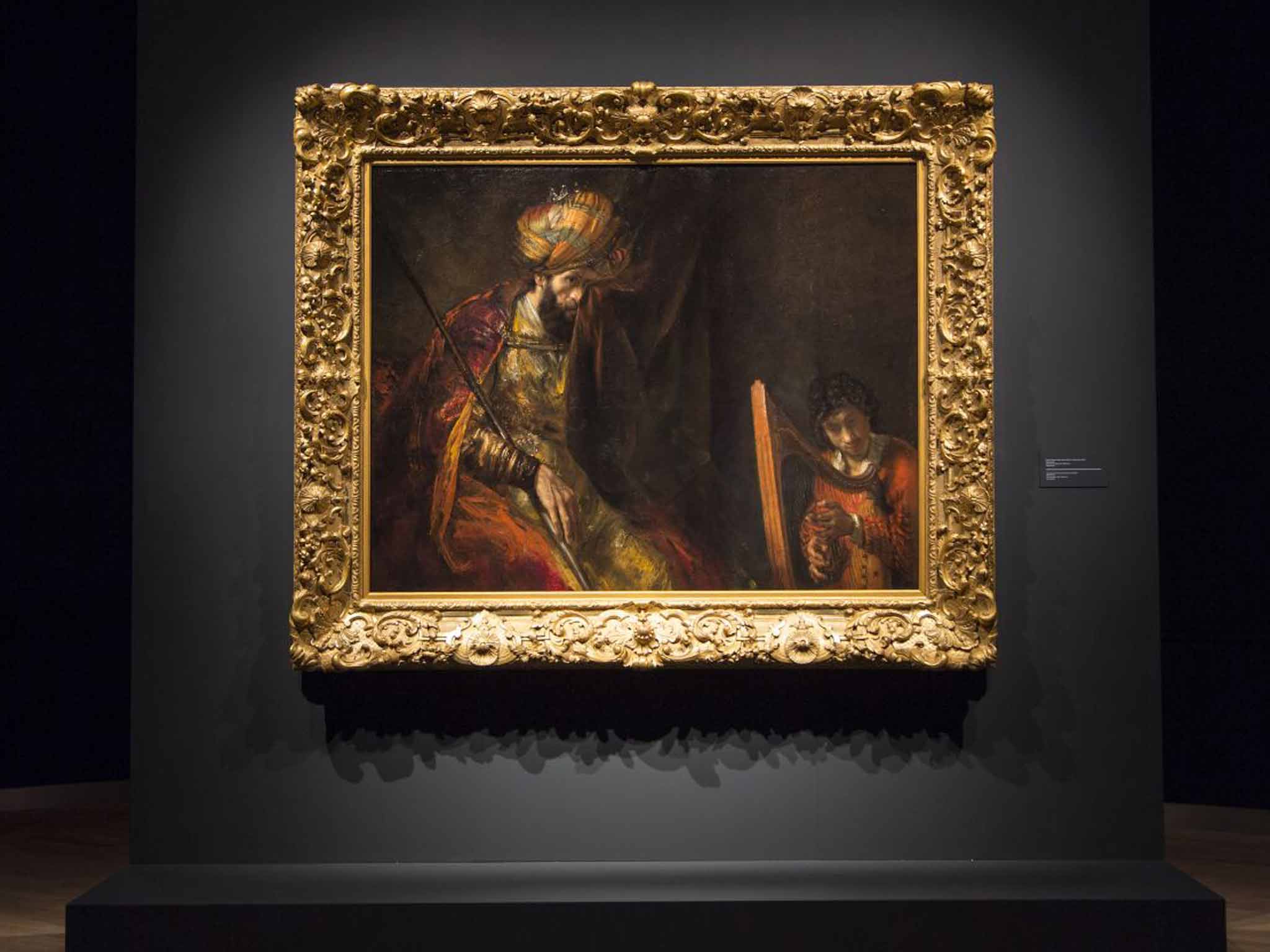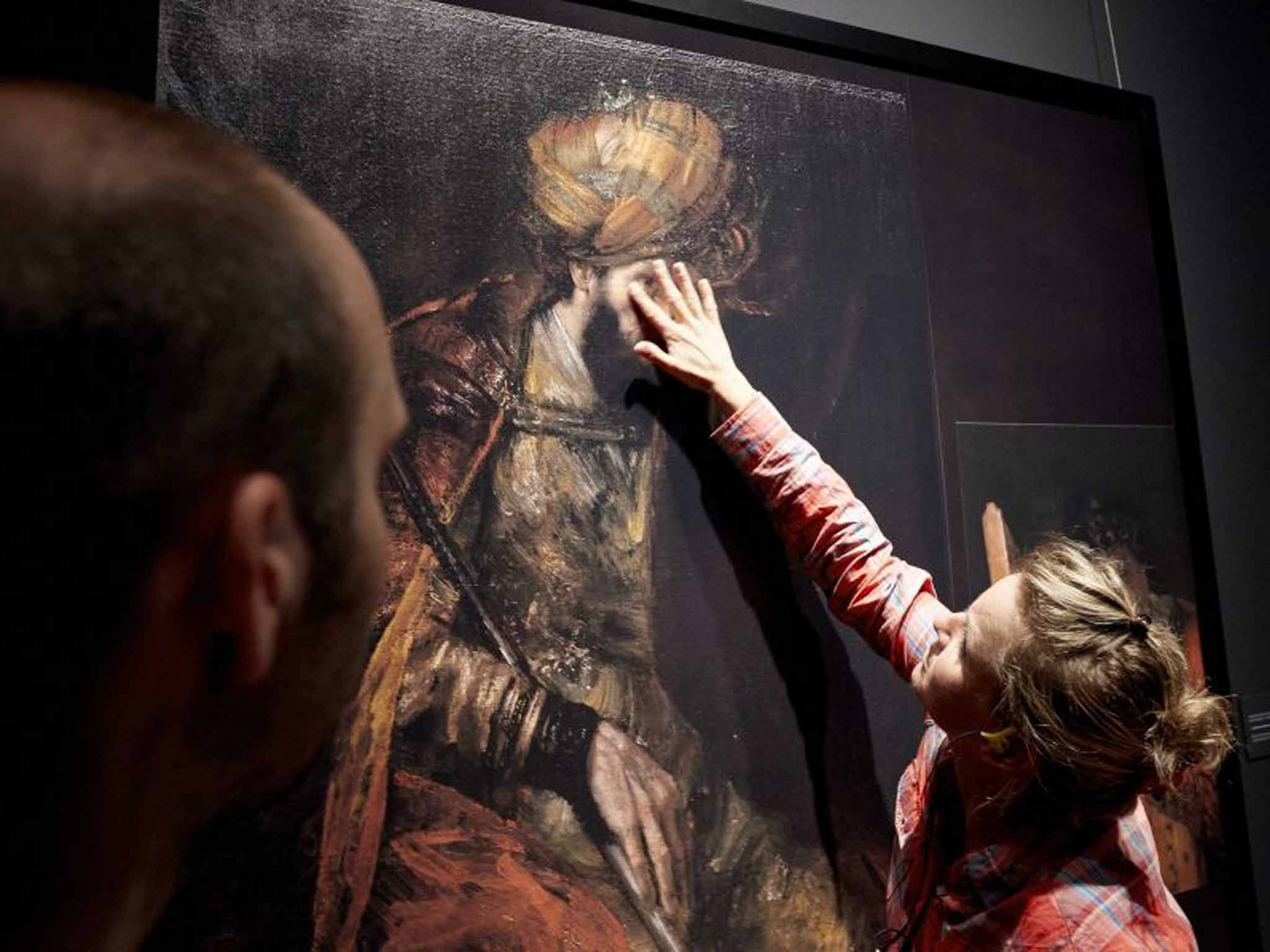Reuniting Rembrandt's masterpiece: The mystery of 'Saul and David'
After a troubled few centuries, two halves of a Rembrandt are together again. Now the single painting is centrepiece of a new exhibition in the Netherlands

For hundreds of years, it was a masterful Rembrandt painting. Then it was split in half in the 19th century and became two Rembrandt paintings. Then its origin was disputed in the 1960s and it was considered not a Rembrandt at all – just a studio imitation of the master's style.
Now, thanks to diligent sleuthing and painstaking restoration by a team of art historians at the Mauritshuis museum in The Hague, the shadowy, richly coloured Saul and David is considered a Rembrandt masterpiece once more. It has just gone on display at the museum, the star of a special exhibition entirely devoted to the painting and its tumultuous past.
The triumphant announcement comes after researchers carefully examined the image using advanced X-ray techniques, the museum explains. They tested paint samples, peered through coats of paint to view the canvas beneath, debated whether the iconography matched Rembrandt's style. It was an investigation worthy of a television procedural, one they've been working on since 2007.
But the real mystery of Saul and David goes back much farther than that. The detailed examination of the work revealed just how much the poor painting endured before ending up on the operating table at The Hague.
Researchers believe that the work was painted between 1646 and 1652, during the "middle period" of the Dutch artist's career. In thick strokes of red, gold and dark brown paint, rich with shadows, it depicts a young David plucking at a harp while King Saul, moved to tears by the music, wipes his eye with a curtain.

The painting's story is murky until 1830, when it was sold to a Parisian duke. At some point after that, it was split down the middle, then eventually stitched back together. In 1898, it was bought by Abraham Bredius, the director of the Mauritshuis, who fell hard for the depiction of King Saul being touched by David's playing. Bredius purchased the painting with his own money and launched a massive public-relations campaign to drum up interest in the piece.
But according to the Mauritshuis website, the German restorer overpainted large swaths of the image, flattening Rembrandt's usually textured surface and loading up the canvas with new paint without doing anything about the cracked and yellow varnish beneath. Meanwhile, the sutures that reconnected the sorely mishandled pieces of the work were still visible. By 1969, though still proudly on display at the Mauritshuis, Saul and David was definitely worse for all the wear it had endured.
"It's been really treated brutally, this painting, in multiple past restoration campaigns," Joris Dik of Delft University of Technology, who provided hi-tech scans of the painting to the restoration effort, told the Associated Press.
Then came along Horst Gerson, a famous Rembrandt scholar working on a survey of the Dutch artist's works. He issued a withering de-attribution of the painting in 1969, arguing that "the painterly execution is superficial and inconsistent" and he didn't "recognise Rembrandt's touch in it". The image's attribution was downgraded to "Rembrandt and/or Studio," a serious blow to its dignity. Not everyone agreed with Gerson's assessment, but they didn't have the evidence to prove him wrong. The truth was buried somewhere beneath several layers of paint and hundreds of years of hectic history.
But modern techniques – particularly an X-ray analysis that isolates elements in pigments to allow researchers to identify their precise colour – finally let the Mauritshuis investigators see what had been hidden for so long. They found that the painting actually comprised 15 pieces of canvas and beneath the layers of gunky paint and grime it had delicate notes of light and colour characteristic of Rembrandt's work during the time it's thought to have been created.
The final assessment of the work's origin was made by curators, restorers and members of the international advisory board of Rembrandt scholars. The director of the Mauritshuis, Emilie Gordenker, made the final call. But Gordenker says the museum would have moved forward with its exhibition on the piece even if Rembrandt had not been found to be its painter.
Luckily for Gordenker – and for Saul and David – this mystery had a happy ending.
(c) Newsweek'
Join our commenting forum
Join thought-provoking conversations, follow other Independent readers and see their replies
Comments